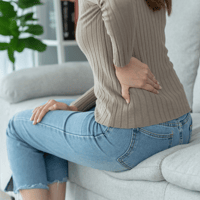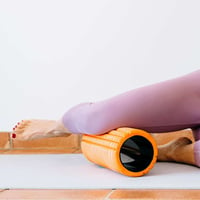Lumbar stenosis is a common spine condition that occurs when the spinal canal narrows, putting...
Endometriosis: Causes, Symptoms, & Management Tips

Endometriosis: Causes, Symptoms, and Tips for Management
Endometriosis is a common yet often misunderstood condition that affects millions of people worldwide. It occurs when tissue similar to the lining of the uterus grows outside the uterus, leading to chronic pain, inflammation, and fertility issues. Understanding its causes, symptoms, and treatment options is key to managing this condition effectively.
Read on to learn more about endometriosis and discover expert-backed strategies, including how physical therapy can play a crucial role in pain management and improving mobility.
What Is Endometriosis?
Endometriosis occurs when endometrial-like tissue grows outside the uterus, commonly affecting the ovaries, fallopian tubes, and the pelvic lining. This tissue behaves similarly to the uterine lining—it thickens, breaks down, and bleeds with each menstrual cycle. However, because it has no way to exit the body, it becomes trapped, leading to inflammation, scar tissue formation, and pain.
Who Does It Affect? Endometriosis can develop at any age but is most commonly diagnosed in individuals in their 20s and 30s. While its exact cause is unknown, factors like genetics, immune system dysfunction, and hormonal imbalances are believed to play a role.
For a more detailed medical overview, check out Mayo Clinic’s resource on endometriosis.
Symptoms of Endometriosis
Endometriosis symptoms vary from mild to severe and can impact daily activities. Common signs include:
- Pelvic pain and cramping, particularly before and during menstruation
- Pain during or after intercourse
- Heavy or irregular periods
- Pain with bowel movements or urination, especially during menstruation
- Fatigue, bloating, and nausea
- Infertility or difficulty conceiving
Pain levels do not always correlate with the severity of the condition—some individuals with mild endometriosis experience severe pain, while others with advanced cases may have little discomfort.
How Can Physical Therapy Help?
For those struggling with endometriosis-related pain, physical therapy can provide significant relief. You can use MotionSync for free to find a physical therapist in NYC or any local physical therapy clinic near you to help with:
- Pelvic floor therapy: Endometriosis often leads to tight, overactive pelvic floor muscles. Manual therapy and relaxation techniques can ease tension and improve function.
- Postural training: Poor posture can exacerbate pain by putting extra stress on the lower back and pelvis. PTs can correct postural imbalances to improve overall comfort.
- Gentle stretching and mobility exercises: Targeted movements reduce stiffness and promote blood flow, alleviating discomfort.
- Pain management techniques: Therapists use myofascial release, deep breathing, and other modalities to help regulate the nervous system and minimize chronic pain.
Lifestyle and Self-Care Tips for Managing Endometriosis
Beyond medical treatment, adopting certain lifestyle changes can help manage symptoms and improve overall well-being.
1. Exercise and Movement
Low-impact exercises such as walking, swimming, or yoga can help reduce inflammation and improve mobility. A physical therapist in Manhattan or your local PT clinic near you can guide you through safe exercises tailored to your needs.
2. Diet and Nutrition
An anti-inflammatory diet rich in leafy greens, omega-3 fatty acids, and whole grains may help manage endometriosis symptoms. Avoiding processed foods and excessive caffeine can also reduce flare-ups.
3. Heat Therapy
Applying a heating pad to the lower abdomen can relieve cramps and relax tight muscles.
4. Stress Management
Stress can exacerbate pain. Techniques like meditation, deep breathing, and acupuncture may provide relief.
5. Seeking Professional Support
Consulting a gynecologist or an endometriosis specialist can help you explore treatment options, including hormone therapy, surgery, or pain management strategies. Additionally, physical therapists near you can work alongside your medical team to create a holistic approach to managing your condition.
When to See a Doctor or Physical Therapist
If you experience persistent pelvic pain, painful periods, or discomfort affecting your quality of life, seek medical advice. A doctor may conduct imaging tests, such as an ultrasound or MRI, to assess your condition.
Additionally, if pain limits your ability to exercise, perform daily tasks, or engage in sexual activity, a physical therapy place near you specializing in pelvic health can offer effective, non-invasive relief strategies.
Final Thoughts
Endometriosis can be challenging, but with the right support, including treatment from a physical therapy in NYC, you can find relief and regain control over your life. If you’re looking for expert guidance, book a physical therapist in Brooklyn or your nearest PT clinic for tailored treatment options in seconds on MotionSync.
For more information on managing pain and improving movement, check out our blog for the latest insights on physical therapy, injury recovery, and movement independence.




